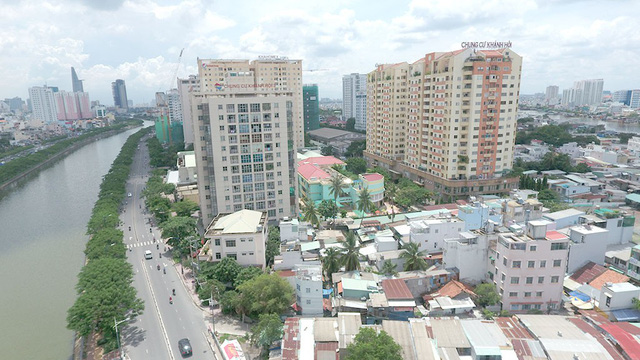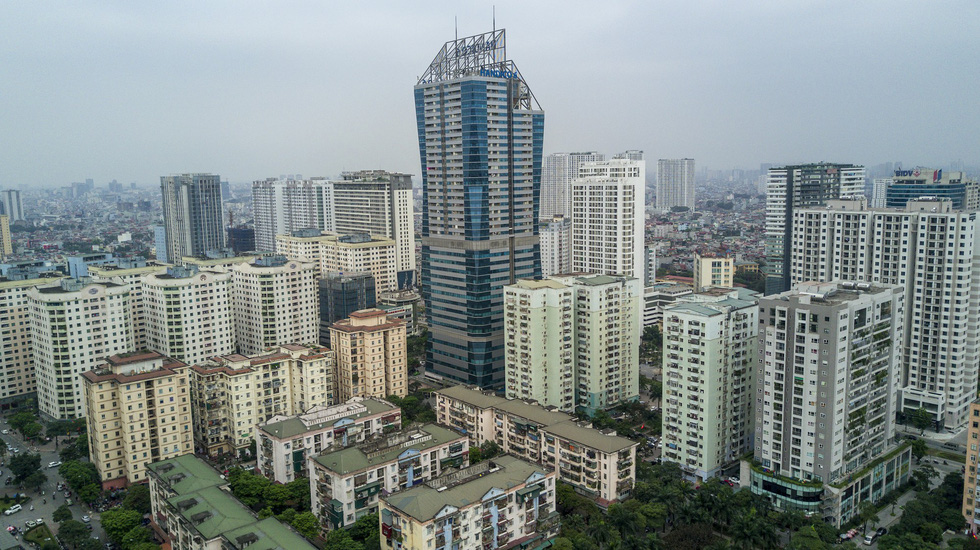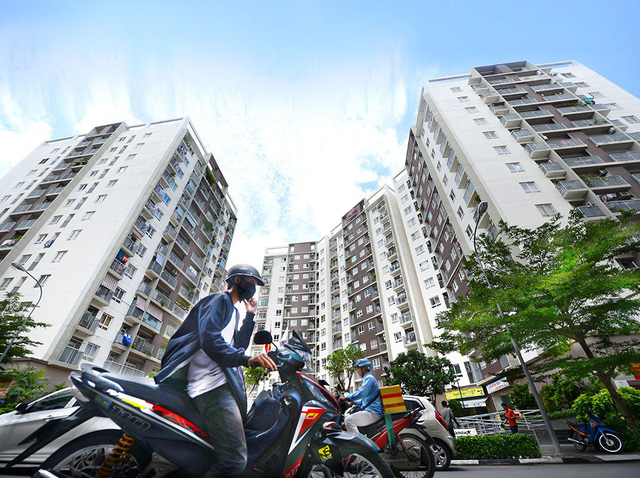Vietnamese Prime Minister Nguyen Xuan Phuc recently requested that Hanoi and Ho Chi Minh City cease the development of high-rise buildings in downtown areas to aid their efforts of eliminating traffic congestion.
The central government previously issued Resolution No.16 in July 31, 2008, which highlighted measures to deal with traffic jams in the two major cities.
However, the traffic situation has since become more serious, prompting officials to seek out a more assertive approach.
PM Phuc has tasked competent authorities with drafting a new resolution to replace Resolution No.16.
The new document should include such measures as ceasing the construction of high-rise apartment complexes and buildings in downtown areas while simultaneously developing satellite urban areas, according to the head of government.
The deadline for the draft resolution to be submitted to the central government has been set for prior to June 30.
 |
| Apartment buildings along Ben Van Don Street in District 4, Ho Chi Minh City. Photo: Tuoi Tre |
Saigon packed with apartment buildings
Khanh Quynh, a resident in Ben Nghe Ward, District 1, said she believes it is necessary to stop the construction of new apartment complexes in downtown Ho Chi Minh City.
“I get caught in gridlock every morning. The numbers of cars and motorcycles keep increasing and placing enormous pressure on the traffic infrastructure of the neighborhood,” Quynh said.
The land bank in the city center should be reserved for public places such as parks, schools, and hospitals, she continued.
Given the increasingly serious situation, the municipal People’s Committee has ordered relevant agencies to cease issuing permits for the construction of apartment buildings within a 930-hectare area at the center of the metropolis.
According to Nguyen Thanh Toan, deputy director of the city’s Department of Planning and Architecture, investors are also encouraged to develop their projects outside of the center.
Ring roads will be built to shorten the journey from downtown areas to satellite urban zones, Toan added.
 |
| High-rise buildings in Hanoi. Photo: Tuoi Tre |
“A series of favorable policies will be implemented for projects in suburban districts. Cost of housing in these neighborhoods will be cheaper and is expected to attract more residents,” the official elaborated.
At the same time, land use fees and taxes will be increased in the inner city, especially downtown areas, he added.
Increasing population in Hanoi
According to Resolution No.16, apartment complexes are only allowed to be built in the Vietnamese capital if they are designed with sufficient parking facilities.
However, a quick survey by Tuoi Tre (Youth) newspaper showed that many apartment buildings in Trung Hoa - Nhan Chinh Urban Area, in Cau Giay and Thanh Xuan Districts, lack parking space for their residents.
About 10 years ago, the urban zone consisted of only 2,400 apartments with over 10,000 people.
 |
| The Trung Hoa - Nhan Chinh Urban Area in Cau Giay and Thanh Xuan Districts, Hanoi. Photo: Tuoi Tre |
The location is now home to more than 30 buildings, between 10 and 30 stories tall, along with a much larger population.
Along Tran Duy Hung, Nguyen Chi Thanh, and Lieu Giai Streets, a series of skyscrapers are erected, namely the Grand Plaza, Eurowindow, Trung Yen Plaza, and Lotte Center.
Cars have to park along the sidewalks and roadways due to the lack of parking lots.
One of the most concerning projects at the moment is the Sun Grand City building at 69B Thuy Khue Street, designed with two luxury apartment buildings that are 21 and 23 stories high.
Current residents in the area worry that serious congestion will occur on Thuy Khue and nearby Hoang Hoa Tham Street, both of which are quite narrow, once the project is completed.
Like us on Facebook or follow us on Twitter to get the latest news about Vietnam!






















































